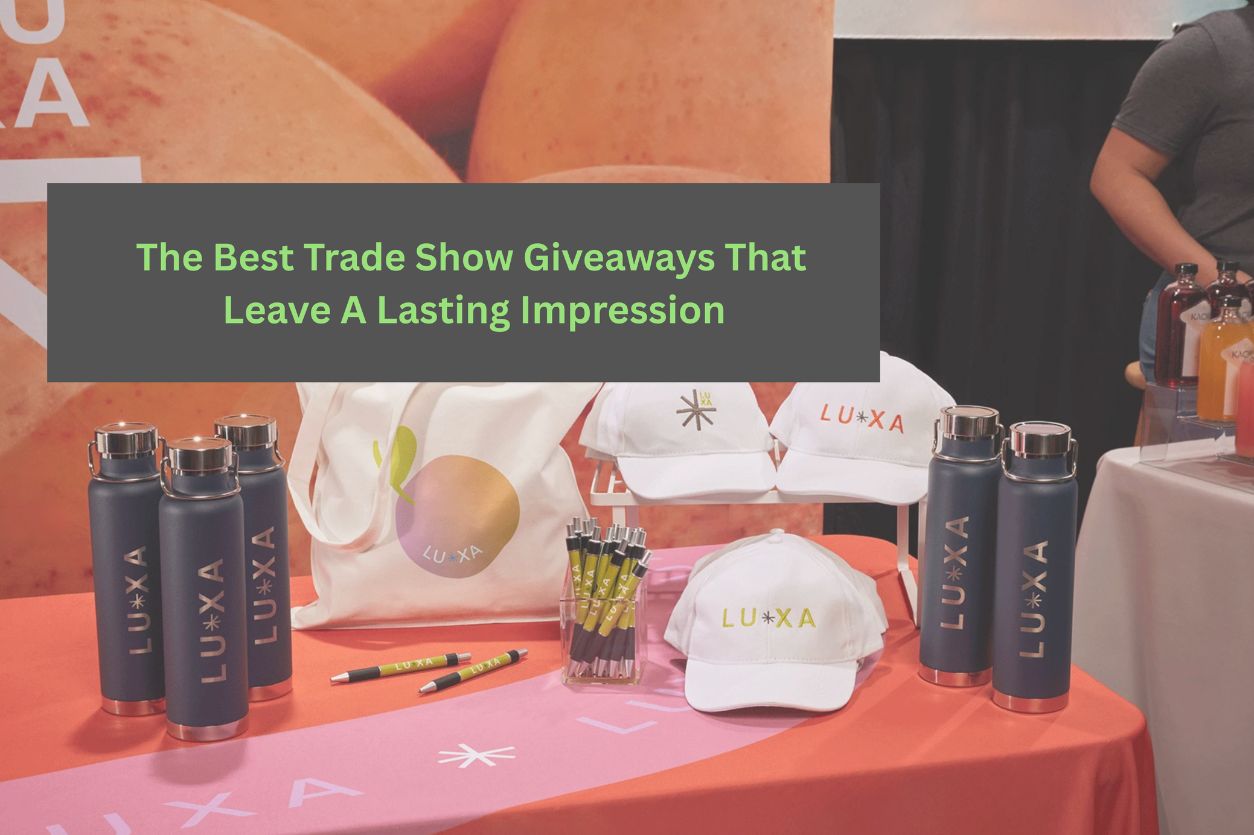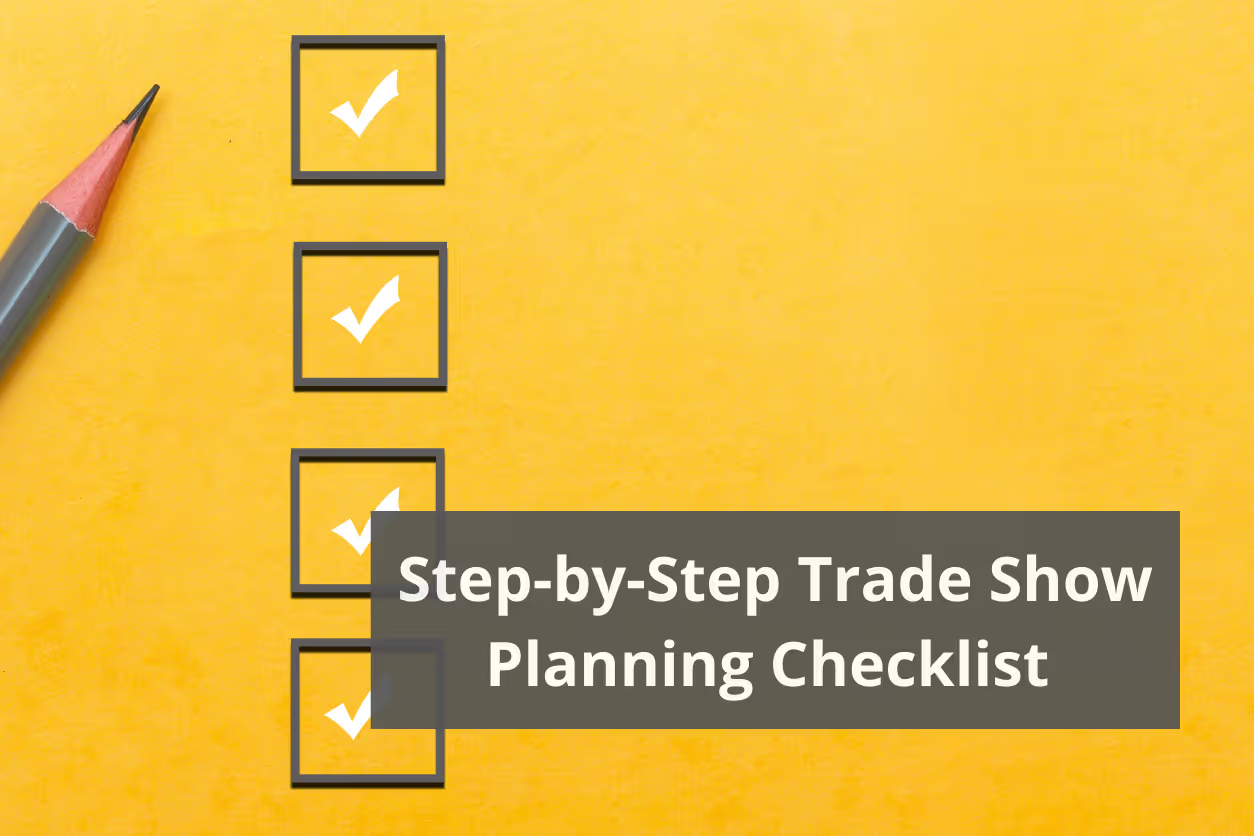Key Points
- Define your booth’s goal upfront—whether it’s branding, merchandising, or hosting meetings—as this will drive layout, messaging, and design choices.
- Design with clarity and simplicity, using high-quality images, bold contrast, readable fonts, and concise messaging to quickly capture attention without overwhelming visitors.
- Tailor your booth design to your specific event, factoring in booth size, location, and target audience to maximize impact and engagement.
- Incorporate strategic design elements like placing your logo high, using double-sided graphics for versatility, and ensuring traffic flow works with your booth size.
- Consider hiring professional designers with trade show experience to ensure effective layout, avoid common design mistakes, and boost the overall effectiveness of your display.
Creating an Effective Trade Show Booth Design That Stands Out
Trade shows are a great way to network, meet with key purchasing clients, and generate leads. However, with so many businesses competing for attention, it is important to have a trade show booth design that clearly communicates your brand message and attracts visitors.
One of the best ways to stand out is by having a trade show booth design that is inviting, informative, and easy to understand. You want your custom booth graphics to compliment your brand without being overwhelming or too vague.
Below we answer some common questions exhibitors have regarding how to achieve the best booth design ideas for trade shows.
Where to start with your trade show booth design?
The best trade show designs are created with a specific intention. If your goal is to sell merchandise, your booth design will be different from a booth whose main goal is branding.
Understanding your audience and what you want to achieve at your event is key in creating a successful design. A professional designer can be very helpful at creating a design layout to accomplish your specific goal.
Deciding on your trade show booth design goal
- Branding Goal:
The booth design will typically have a large logo and brand images with a simple tagline and contact information. This booth is generally a little more closed off with give-away items in the front.
- Merchandising Goal:
Use large branding images around and/or behind merchandise shelving or hangers. This style booth will leave the front as open as possible to invite guests to come view the merchandise in the booth. Adding logoed headers and or wall mounted monitors can help brand a merchandising booth without taking up floor space.

- Sales Meeting Goal:
Often these booths are a little larger (10x20, 20x20) to allow for a private or semi-private meeting space in the booth. The design should avoid using too much informational text and instead aim to spark curiosity and invite guests to talk with your team. It’s common to see at least one monitor with information or a product demo in the booth. This goal can be accomplished in a 10x10 space but the back wall design should be laid-out with the understanding that people will be meeting for extended periods in-front of the design.
Tips to design a great exhibition booth:
Below are good general guidelines to follow when laying out your booth design and graphics.
- Use high-quality images:
Low resolution design elements will pixelate and look bad on large format prints. High quality images (72 - 150 DPI) work great. Vector format design elements are perfect because they can stretch and be resized without pixelating.

- Contrast grabs attention:
Contrast in colors and design elements will help your booth design to stand out. Be careful to avoid an overwhelming design but a nice contrast of bright and dark design elements in your display will help your design pop. This is even more true for backlit displays.
- Only use easy to read fonts:
Your fonts should be easy to read from 10ft away. Avoid large cursive and decorative fonts if possible. Those fonts can look cool but they can be hard to read. Trade shows are a busy place and attendees can be overwhelmed. If something is hard to read, people will ignore it. Also, avoid using too many fonts. We find the best trade show designs use 1-3 fonts, total.
- Keep your message concise:
Your design should convey your message quickly and easily. Use images to tell your story instead of large blocks of text. Too much text and information in the booth design is the most common mistake exhibitors make. Your booth design should spark curiosity and interest so that your staff can explain in more detail.
- Place your logo high on the design:
Your logo should be prominently displayed high on your trade show booth graphics. If you put your logo too low on the booth design, your staff may inadvertently block it from show attendees.
Design your booth for your specific events
When designing your exhibition booth, don’t overlook the location where you are exhibiting at and who the audience is going to be. Create your custom booth design based on your show’s location, your booth location within the event, and the specific guests who will visit your display.
If you are ordering an inline booth, consider ordering double-sided graphics if available. Having double-sided graphics allows you to create two different designs that you can flip around depending on the event you are exhibiting at.
- The size of your booth:
The size of your booth will determine how much space you have to work with. Also keep in mind, the goal of your booth will impact the needed size. For example if you are wanting to sit down with clients and sign contracts, you’ll need to allow for larger spaces. If you just want your booth for simple branding purposes, you may be able to get by with a smaller layout. Be aware of the space you are allowing attendees to move around your booth. Popular sizes include 10x10, 10x20, and 20x20, and the size refers to the floor space you have.
- The location of your booth:
The location of your booth will also affect your design. If you're in a high-traffic area, you'll need to make sure your booth is visible from a distance. If you have an island booth, you will need to plan a design that includes all sides of your booth; a corner booth should be designed with two to three sides in mind; an in-line booth should be designed from a head-on perspective.
- Your target audience:
You need to know your target audience in order to design a booth that appeals to them. What are their interests? What are their needs? Once you know your target audience, you can start developing a design that will grab their attention.
What Makes a Successful Booth Design?
Defining what “success” means to your company is an important step before designing your trade show display. For example, If the point of being at a specific event is to sell more of product A, you don’t want product B to be the main image.
In general terms, a successful trade show booth design is one that grabs attention and sparks interest without being overwhelming. A well designed display will immediately add value to a brand in the way that a well managed and clean retail location adds value.
Creating a great custom booth design can be tricky and time consuming but in the end, it's worth it. Perspective clients and show guests will notice a well designed booth and be more open to talking with your brand which could earn big returns.
Hiring professional graphic design services will help eliminate any potential visual or technical errors. Additionally professional designers, with large format design experience, generally have a good understanding of how to space and layout images, text, and other elements. It’s common for professionals to charge by the hour but at MODdisplays, we offer a flat rate design service to keep it simple. If you have any questions about a new display or updating your current display, please contact us by phone at 877.663.3976 or by email at Sales@moddisplays.com.






.jpg)

.png)

.avif)





